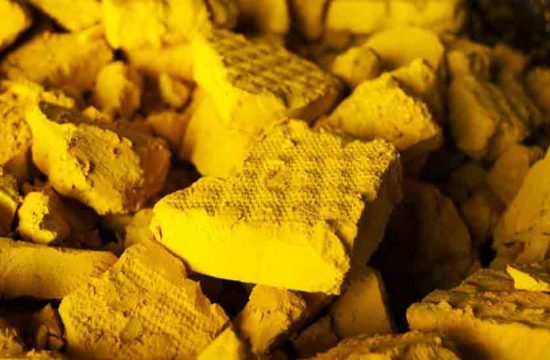
Cambridge, UK (IDTechEx)—The market for graphene is at a tipping point, with long periods of R&D now starting to translate into significant purchase orders.
For a long time, the graphene market was overwhelmingly driven by a ‘materials push’ whereby graphene firms worked hard to persuade markets of the properties and benefits of their product. Now, that has transitioned into ‘market pull’, with key drivers coming to the fore.
IDTechEx continues to provide the most comprehensive independent market research on the field of graphene and other nanocarbons. In the latest update to their report, “Graphene Market and 2D Materials Assessment 2021–2031”, IDTechEx provides a granular outlook for the industry, including forecasts, manufacturer analysis, material benchmarking, price and applications. The tipping point for graphene is here but with so many manufacturers not all will become successful and some consolidation is inevitable.
Multiple drivers are emerging for graphene as the value-added material of choice. Graphene’s ability to enhance mechanical lifetimes – for example, through wear-resistant liners or anti-corrosion coatings – and greater thermal management requirements are two examples of prevalent forces.
However, there is another market driver emerging, one that is perhaps surprising but will have a major impact over the next decade – sustainability.
As Dr. Soroush Nazarpour, President and CEO of NanoXplore, puts it: ‘Graphene is a key ingredient when it comes to sustainability of many markets and applications.
For instance, it enables closed-loop production practices for plastic processing; and it enhances the capacity and charging speed of Li-ion batteries. Graphene will definitely make the world a greener place.’
IDTechEx has identified three core application areas for graphene that can serve this key market driver.
Biobased and recycled polymers
Many territories – and the companies that operate within them – have committed to aspects of the circular economy, particularly the elimination of waste. This often means firms are seeking to reduce their consumption of single-use plastics and to increase the amount of recycled material they use.
But this is a challenge: recycled content is typically mechanically inferior to the virgin material, and incorporating a (‘non-green’) additive to overcome these limitations can defeat the sustainability objective. Also, it may still be insufficient in quality terms.
This is where graphene comes in. The multifunctional properties of graphene as a polymer additive are well known. Being derived from graphite, it also has an advantage over competing, fossil-fuel-based additives when it comes to enhanced sustainability.
Graphene can be used this way within many diverse sectors, and even low-volume incorporation could generate big wins for graphene manufacturers – if they can scale appropriately and control costs. The most immediate is in graphene-enabled non-food packaging which IDTechEx expect to become a key growth area in the mid-term.
Beyond this, there is also the opportunity in bioplastics. Again, these can be improved to the necessary performance by utilising graphene’s mechanical and barrier properties. Packaging, coffee cups, and other opportunities are being explored from some of the largest customers through to young emerging companies such as Toraphene.
Energy storage
This is one of the most significant market movements of the 21st century – full electrification of our transportation is underway with a booming potential. Driven by legislation in the backdrop of a climate crisis the market landscape is quickly transforming.
“Graphene batteries” are a headline that is seen readily but poorly used. Predominantly graphene is used as an additive with a high electrical and thermal conductivity coupled with beneficial mechanical properties. This can be used in either of the electrodes, the coatings on the current collector, or outside of the cell.
For current generation lithium-ion batteries graphene will only have a modest uptake, mainly for those seeking fast charging solutions in the consumer section. This is most notably seen in the smartphone products launched from Xiaomi in 2020 and upcoming work from Real Graphene and Appear.
However, the greater potential lies in future developments, namely silicon anodes and lithium-sulfur batteries. Significant developments – enabled by graphene – have already been seen and there remains a high interest from nearly every graphene manufacturer. Graphene is certainly not the only solution being explored, but if companies can find a graphene-enabled solution it will be very significant for the industry.
What is more, graphene’s energy storage applications are not limited to batteries; graphene-enabled supercapacitors are gaining notable traction and could be critical solutions in conjunction with other energy storage devices (e.g. hydrogen). In this arena, Skeleton Technologies has had a very significant year, raising EUR 41.3m in a Series D funding round, announcing a partnership with Wrightbus, and signing a EUR 1bn letter of intent with an automotive manufacturer.
Concrete and Asphalt
Perhaps surprisingly, many graphene companies are currently exploring the potentials of concrete and asphalt markets. In their current forms, both of these products are significant contributors to climate change and would benefit from improved mechanical performance. Some early-stage trials have suggested that graphene could solve both problems, driving up sustainability and practical outcomes together.
Notable projects from the likes of Directa Plus have made headlines, and several graphene manufacturers have told IDTechEx that they are in advanced conversations with key players. The volume potential of these markets is huge – perhaps far greater than the other markets described in this article – and would completely change the outlook for graphene.
However, as is so often the case, there is a gap to be bridged between current interest and real orders. The building and construction industry has very fine margins and is notoriously slow to adopt. Thus, concrete and asphalt are certainly markets to watch, but there is some way to go yet.









